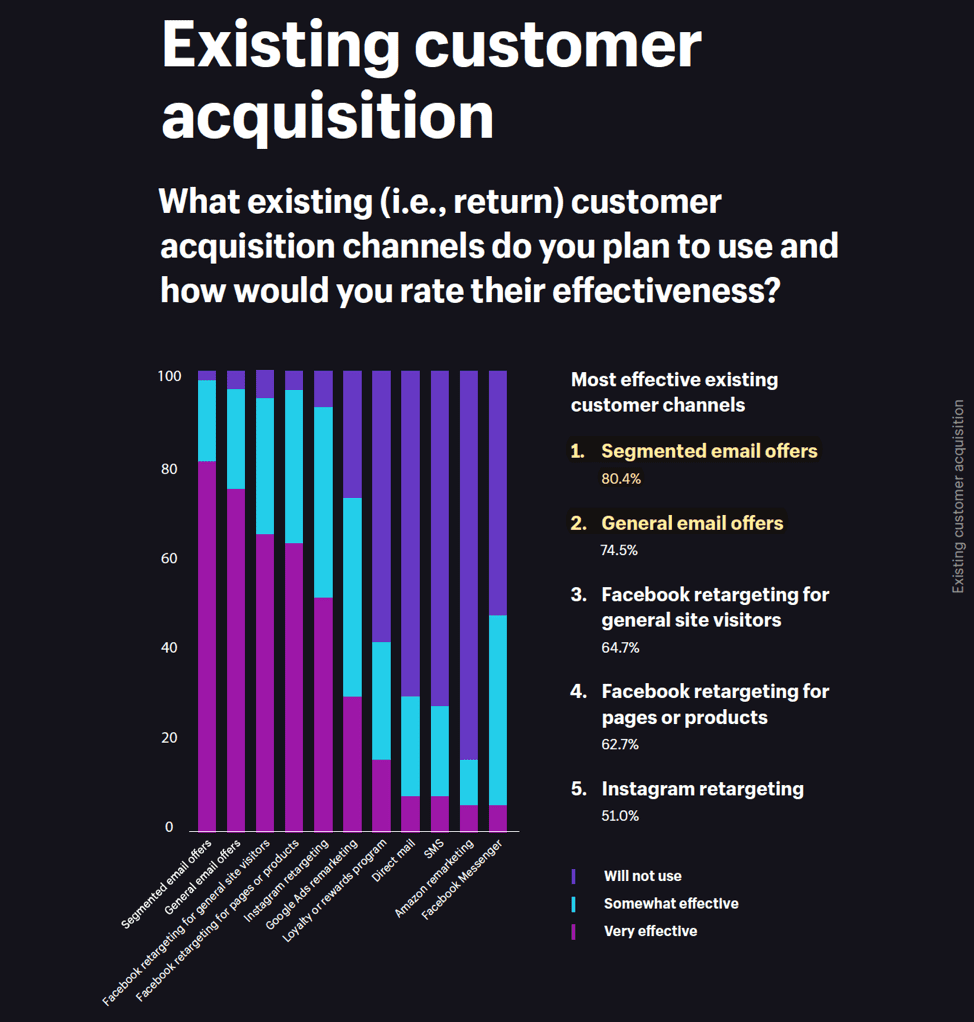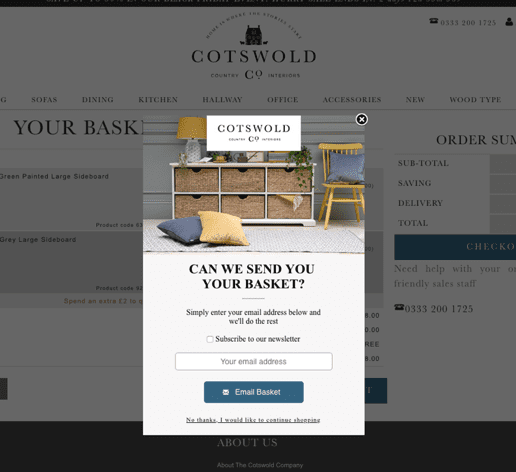True or false: Christmas is the No. 1 shopping holiday in both the United States and the U.K.
Answer: False! Well, sort of.
Did you get it wrong? It would be easy to understand why, especially this time of year as marketers work on their holiday plans and the pressure builds to meet or exceed company revenue goals by the end of the year.
Here’s How Holiday Calendars Differ
School spending rules: Christmas is still the biggest shopping holiday in the U.K. But, in the U.S., “back to school” has overtaken “winter holidays” (including Christmas, New Year, Hanukkah, Kwanzaa and the winter solstice) as the biggest spending event on the marketing calendar, according to the National Retail Federation’s annual Holiday and Seasonal Trends report.
Halloween is growing as a holiday in the U.K., where spending has doubled since 2013 to £419 million. In the U.S., Halloween spending ($9 billion) is in 9th place behind back-to-school/college, winter holidays, Mother’s Day/Father’s Day, Easter, Valentine’s Day and graduation season, but ahead of the Super Bowl (first week in February).
Although the U.S. and U.K. markets share many cultural, seasonal and religious holidays and marketing practices, the U.S. has a longer list of national holidays that the U.K. doesn’t celebrate. Presidents Day, Memorial Day, Independence Day, Veterans Day and Thanksgiving Day also figure prominently in email campaigns.
Bank holidays and payday: The U.K. recognizes “bank holidays,” or days when banks, government offices and most businesses are closed nationwide, such as on Christmas, Good Friday before Easter, the Monday after Easter, and Boxing Day (Dec. 26), but also two days in May and a summer bank holiday in August.
If you track email campaigns from U.K. e-commerce brands, you’ll also see a popular hook is the “payday treat.” Payday for most employees in the U.K. is the last Friday of the month—hence, why retailers refer to this. Retailer purchase data also reflects a distinct shopping pattern tied to the end-of-month payday.
Marketers Influence Each Other
Two events demonstrate this. Black Friday wasn’t a factor in the U.K. until Asda, a British supermarket retailer and Walmart subsidiary, introduced it in 2013. Today, it’s one of the biggest revenue-generating periods.
Conversely, Boxing Day, Dec. 26, has been a U.K. cultural tradition for generations: In the 17th century, Britain thanked its service workers with “Christmas boxes,” which is how the holiday apparently got its name. Now, some U.S. marketers are beginning to pick it up as a designation for the day after Christmas.
A Holiday Email Marketing Analysis
To give you a quick look at how U.K. and U.S. marketers approach common holidays, I used email intelligence platform eDataSource to analyze email engagement on two holidays that are prominent in both countries: Valentine’s Day and Black Friday.
Valentine’s Day is an observed “holiday” in both the U.S. and U.K., although not a formal bank holiday in either one.
Coined for the time of year when retailers go from being “in the red” to “in the black,” Black Friday is a cultural phenomenon that evolved in the United States as more people took the day off after Thanksgiving. Today, Americans use this day to surge into stores and kick the Christmas shopping season into high gear.
To study holiday marketing differences, I picked one brand that markets in both countries—Ralph Lauren, which has separate marketing teams and email programs for its U.S. and U.K. operations.
Ralph Lauren – Black Friday Campaigns (All Senders)
| Metric | U.K. Average | U.S. Average |
| Inbox placement | 82% | 76% |
| Read rate | 17.1% | 16% |
| Read-and-delete rate | 8.8% | 9% |
| Delete-without-reading rate | 18.6% | 16% |
Email examples: According to eDataSource, the Ralph Lauren U.K. email team sent five Black Friday emails over “Black Friday Weekend.” The U.S. team sent three Black Friday emails from Wednesday through Black Friday and then followed up on Saturday and Sunday with a Thanksgiving Weekend theme.
Both Ralph Lauren email marketing teams sent messages on the day before Thanksgiving.
From the U.K. team:
From the U.S. team:
Ralph Lauren – Valentine’s Day Campaigns (All Senders)
| Metric | U.K. Average | U.S. Average |
| Inbox placement | 82.1% | 76.6% |
| Read rate | 18.1% | 16.9% |
| Read-and-delete rate | 8.6% | 10.4% |
| Delete-without-reading rate | 19.9% | 17.6% |
The U.S. team launched its Valentine’s Day campaign on Jan. 18. The U.K. team sent a similar message but without the children’s promotions and a different perfume image.
Following those emails, the U.S. emails featured animated hero images that set the theme for most of the Valentine’s-related emails and had a higher frequency than the U.K. emails.
The U.S. Jan. 18 email:
The U.K. Jan. 26 email:
Results: I found the two campaigns for the same brand often varied significantly from country to country. Although they shared some creative content, including images and message templates, the frequencies and cadences were often different.
Read on for expert advice on how to take advantage of the holiday spirit, regardless of where you do business.
Make the Most of Holiday Marketing
Even as chatbots, shoppable Pinterest pins and Instagram posts, and social-video sites like TikTok grab attention, email is still the most reliable channel for marketers.
This chart from Shopify shows segmented and general email offers are the most effective:


Email reigns supreme for attracting return buyers.
As I noted above, seasonal and holiday marketing can bring you a banquet of new subscribers, especially from motivated shoppers who use search engines to find your website.
These five tips below can help you convert more of these newcomers into loyal customers and also retain or re-engage your longtime users.
Why Run Seasonal Email Campaigns?
Aside from the obvious one—you want to promote holiday and seasonal merchandise—there are three good reasons to tie your campaigns to holidays and other cultural and seasonal events:
- They align with what’s on your customers’ minds and tap into the cultural zeitgeist.
- Seasonal emails give your team the chance to unleash their creativity and differentiate your emails.
- Emails with major purchasing components, such as Christmas and Valentine’s Day, help your customers look for inspiration and shopping for those holidays.
Seasonal emails activate the “nudge effect:” The nudge effect isn’t unique to email, but once you understand it, you’ll think differently about your email and subscribers’ activity.
Email marketers usually get concerned when subscribers don’t open their emails. But among the reasons people don’t open emails—or unsubscribe—is because they aren’t in the market at the moment you send your message.
But it doesn’t mean they won’t be ready to buy, especially if they shop your brand only at certain times of the year, like the holidays.
Your emails that come into the inbox the rest of the year reinforce your brand just by showing up. When they’re ready to buy, your email will nudge them to act.
5 Tips for Better Holiday Email Campaigns
1. Strategize and plan well in advance.
A Shopify study found 43% of marketers don’t start working on their holiday plans until the third business quarter (July, August and September), and 25.5% start planning in October.
So, if you haven’t begun work yet, you’re not alone (we won’t say a word about the overachieving 6% who start holiday planning right after the New Year’s Day parties wind down).
Still, don’t wait too long. It takes time to define your goals and strategy, to coordinate with all of the teams that have input into your email campaigns and to line up and test your creative content and messages.
2. Monitor the changes that your holiday planning will bring.
Boosting your frequency can change your list dynamic. If you don’t handle it strategically, you could alienate your subscribers to the point where they unsubscribe, go inactive or click the “this is spam” button. That can affect your ability to reach the inbox.
Use a tool like eDataSource or invest in your ESP’s deliverability services (now available to Iterable customers), especially when ramping up frequency in heavy mailing periods like the week before Black Friday and the last two weeks before Christmas.
3. Get personal! Make your emails as meaningful and personalized as possible.
We know personalized emails outperform day-to-day broadcast emails because they speak directly to each customer, reflecting their interests, preferences and behavior.
This means you need to get your data in order and accessible so you can use it to segment and target your messages or add content tailored just for them.
4. Test and tweak your browse abandon, cart recovery and basket reminder programs.
Holiday shopping brings more people to your website, and all those extra shoppers mean more abandonment—carts, browse sessions, account creations and more. Your abandonment-recovery emails can bring them back to finish what they started.
Think outside the box, too. This exit-intent basket-reminder popover from The Cotswold Company is brilliant both for converting unknown shoppers into subscribers and for converting more abandoned carts during peak periods.


Use a popover to acquire new subscribers and recover abandoned carts—at the same time!
5. Plan how to persuade new buyers to become repeat buyers.
As I mentioned above, the holidays bring swarms of new shoppers to your site. Besides getting them to join your email or loyalty program, develop tactics to bring them back to buy again.
This Kate Spade email sends a special incentive to bring back shoppers who purchased at a one-time discount event.


Kate Spade offers a special discount to flash sale customers.
Holiday Email Marketing: Wrapping It Up in a Bow
U.K. and U.S. email marketers often take similar approaches to holiday marketing but also have distinctive strategies that reflect cultural differences.
But marketers on both sides of the Atlantic—or the Pacific—can use holiday emails to capitalize on current trends, expand their reach to new audiences and convert more first-time buyers into loyal customers.
Want even more email marketing tips on how to prepare for a successful shopping season? Watch Iterable’s on-demand webinar, “Take It From the Pros: Advice to Make This Holiday Season Everything Nice,” featuring our friends at 250ok. We discuss how to optimize email delivery, reach and conversions with your customers.



































